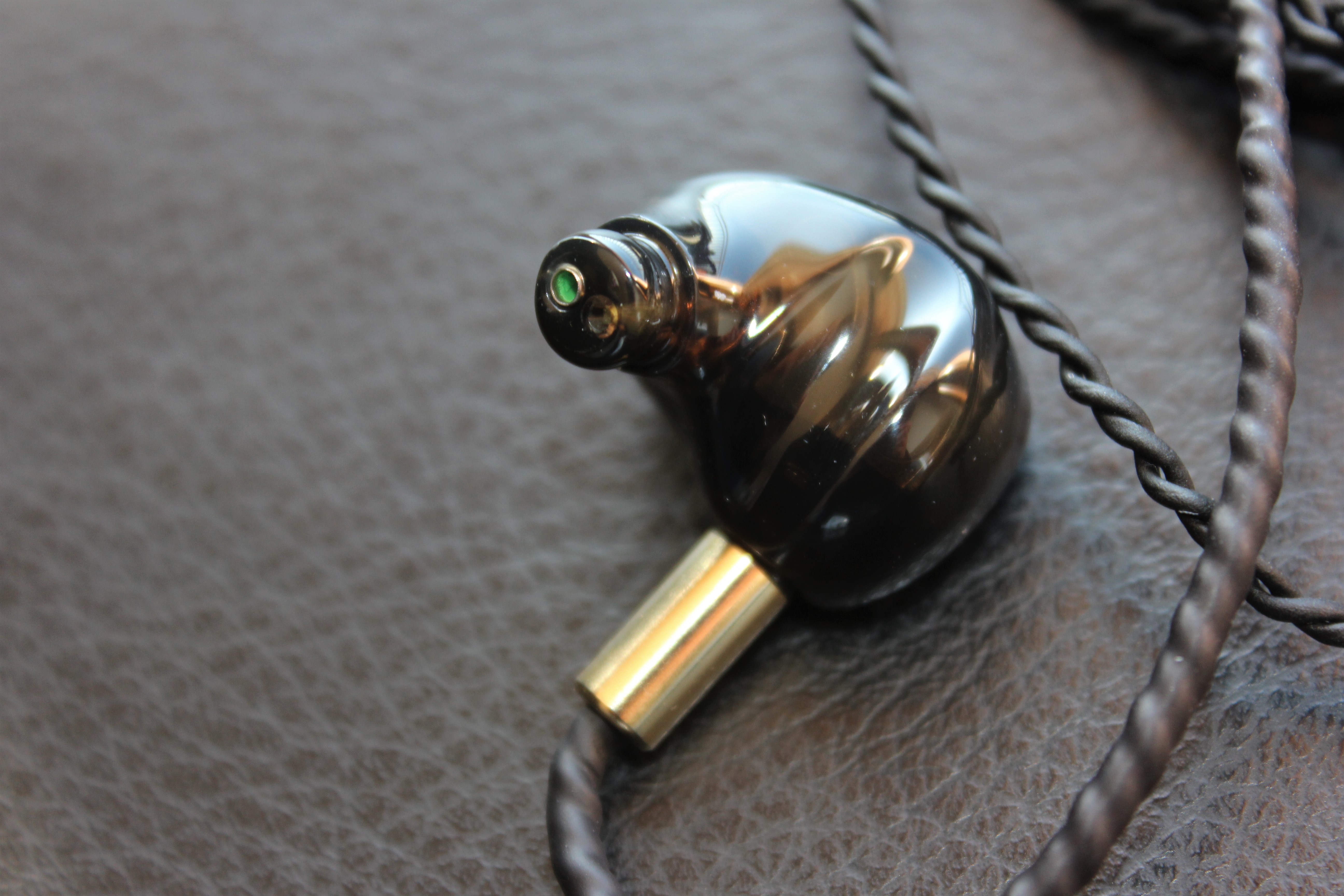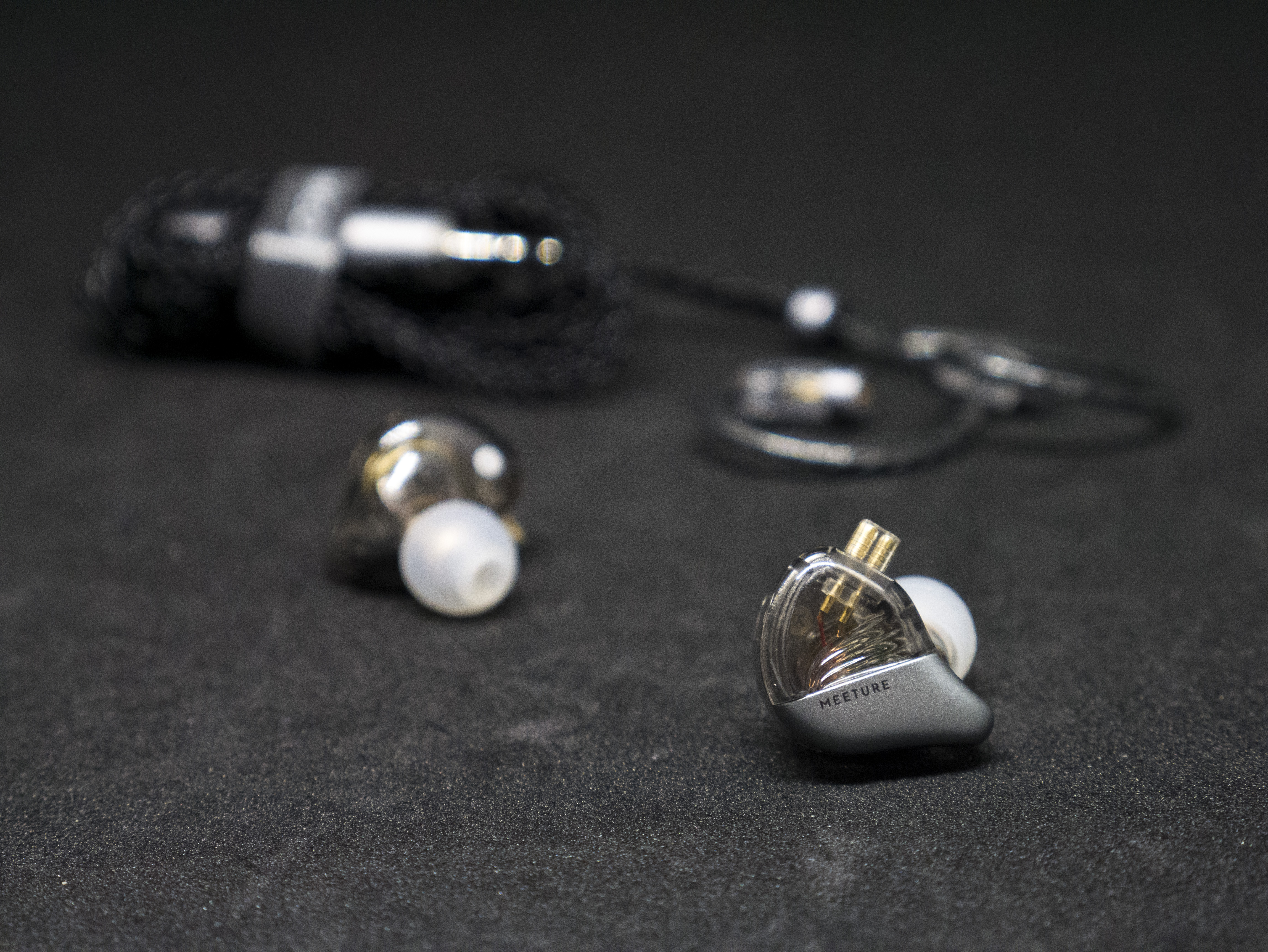
Review by Riccardo Galla
Price: 1100$
Where to buy: https://mezeaudio.com/products/rai-penta
Specifications:
Driver: 4 x Customized Balanced Armature and 1 x Dynamic Driver
Frequency Range: 4Hz – 45kHz
Impedance: 20Ω
Sensitivity: 110dB SPL/1mW Sensitivity
Max Input Power: 30mW
Distortion: <1%
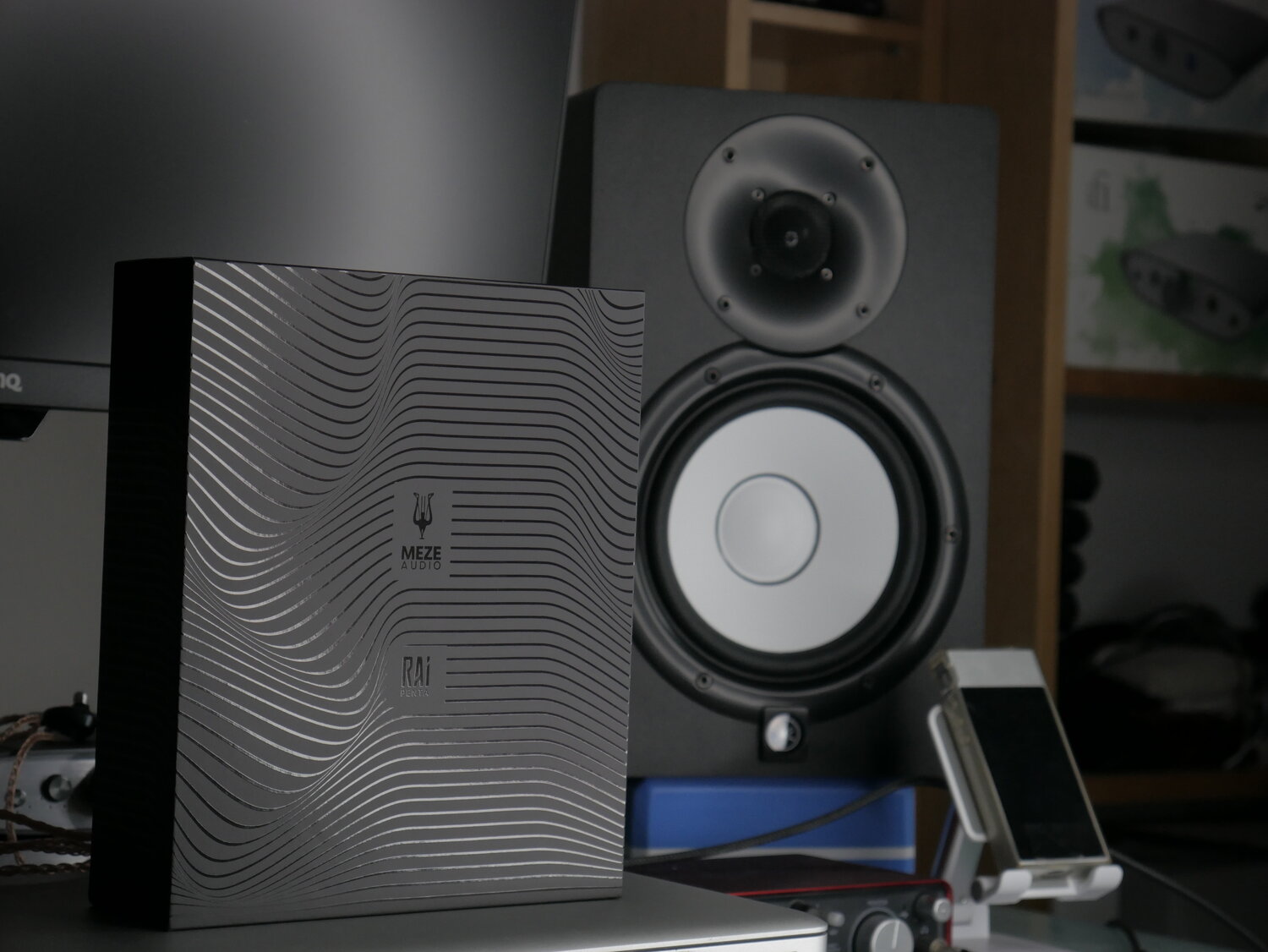
Introduction
There are many ways to review products. I feel the Rai Penta are in-ear monitors designed for musicians, and I’m confident enough to be one of them. So, my point of view is the one of a person who not only listens, but also writes music, plays, sings. I came to know well some Meze products (like the 99 Classics, which I use for reference and for pre-productions). Meze has released the new “Rai” series (which means “heaven”) as their IEM line-up, with the Penta as first and the Solo after them. Compared to the 99 or the 12 Classics, the tuning has changed from a warm to a more flat and reference one. That’s a good choice for people like me, who not only like, but also need a flat frequency response.
The Rai Penta cost over 1000$. The only product by Meze which costs more are the orthodynamic/planars called “Empyrean”, which are full-sized headphones. That means these are their flagship earphones, and you can feel it. The build quality is astonishing and the design is a breath of fresh air. The MMCX connector is clicky and among the best ones I’ve experienced to plug into my reference cable – the Kasai X by Ares Audio. The stock cable is more than good enough, even though I’d expect a more solid one for this price – it’s a matter of feel, nothing bad on sound or other areas (no microphonics whatsoever). The plug is rhodium plated, the same treatment you can find on their upgrade cables for the 99 series (review here, but the 4.4 connector is gold plated); you can also buy official balanced cables for the Rai series, which are very similar. There are some vents (the largest one has the same design as the holes of the Empyrean), because there’s a dynamic driver which needs air and because of pressure release. Like many TOTL earphones, there’s a system to avoid the vacuum to create inside your ear canal, and this one does an amazing job. Unlike most of my resin in-ear monitors, these never hurt my ears when I put them on, thanks to that pressure relief vent. The metal shell is nicely crafted, with a perfect CNC treatment; there’s a Meze logo on the front of both buds. The nozzle is a little bigger than average, allowing a fuller filling of the canal. I have pretty small ears and that didn’t hurt me once. The nozzle itself has three holes, directly connected to the dedicated drivers. There are two couples of balanced armatures, as well as the aforementioned dynamic driver. I assume the big one handles the low frequencies, while a couple of BAs is for the midrange and the other is for treble. Everything in these earphones is made of metal: even the interior chambers, which usually are made of 3D-printed plastic. The premium feel is there, when you look at them, when you touch them and when you put them on. But when you start listening, that’s even better.

Unboxing
The Rai Penta feature a whole package of foam tips, single and double flange silicon tips, a quarter inch adapter and an airplane adapter, as well as some stickers. Even though I think my ear tips are different in measure than the ones I’ve seen in other reviews, I liked both the single and double flange silicon ones in their smallest size. I don’t need foams in this case, because the fit is already great. There’s also a nice cleaning tool which can be inserted deeply into the nozzle. My only concern? There could be another cable, balanced, to have more versatility from the start.



I’ve released a music video featuring the Rai Penta. It’s an original song, which is part of the soundtrack of a short movie released last year by Quokka Production. If you want to check it out, it’s this one, called “Veleno”.
Sound
The most expensive IEMs that I’ve ever tried have been the Unique Melody Mason V3. I didn’t love them at all, but I felt the giant difference from my gear: the micro details, the liveness, the extreme frequency range they covered – all absolutely perceivable by ear. The Rai Penta give me that sensation every time I put them on: compared to every other earphone I have, there’s a consistent gap which makes me enjoy every bit of this earphone. I’m a psychologist, so I know biases and I fear to have many while reviewing stuff; that’s why I’ve tried giving these and other earphones to various people which don’t know nor understand anything about pricing, driver configuration or tuning. That was a blind test, to be sure there weren’t any heuristics. I gave them the BLON BL03 and the AudioSense T180 (two sub-50$ models), the AudioSense T800 and the UfoEar Ufo-112 (sub-400$) and then the Rai Penta (as well as other models). Funny story, the stage musicians perferred the BLONs and the UfoEar, the classical cellist was impressed by the T180, but all of them and the other people tested agreed on the absolute superiority of the Rai Penta. Like there were more difference between the T800 (300$) and the Rai Penta (1100$) than between the BLON (30$) and the T800. So? We can start from here: price doesn’t make a product good or bad. But everybody can hear when the difference is undeniably perceivable. And when it is, then even I can justify to go above a thousand dollars.

The Rai Penta are great. It’s like realizing that in-ears can achieve a superior sound that I’d never expected but in full-sized headphones. It’s not for micro-details (like on the aforementioned 16-driver UM Mason); they don’t shine for that reason. It’s because the sound representation is closer than I’ve ever experienced to a live listening session. This kind of sensation is similar to bringing everything forward, not in the way you can achieve with earphones like the KZ family (even though some of them are really good for live staging), but in a superior, more refined and psycho-acoustically accurate way. I’m not choosing random words: superior, because they give a sense of perpetual control; more refined, because the crossover is amazingly engineered, in a way I’ve never experienced. I’ve heard bad crossovers (e.g. NiceHCK N3, a hybrid piezo which wasn’t coherent), so-and-so crossovers (e.g. BGVP DMG) and this one is by far the best implementation. And psycho-acoustically accurate? That means peaks are studied to enhance the room you hear, while avoiding being harsh or sibilant. A whole lot of work has been done to obtain this result, which is – in my personal opinion – really close to perfection.
Let’s start analyzing the characteristics. Bass isn’t their main focus, and that’s okay: I wouldn’t need more. That’s fair to mention the dynamic driver is really capable: if you try with an equalizer, or use them for a production in your DAW, you’ll notice that you can absolutely smash the low frequencies, but it’s not the goal of these IEMs. Usually, when I speak of earphones I mention the quickness of the bass, the decay, the transients. I feel it’s more difficult than usual to talk about those features here, because it’s another level of sound. I’d never say this bass isn’t quick, or the decay is slow; however, I don’t feel they necessary are the quickest earphones in the bass reproduction. It’s just that they sound so convincing that I don’t even need to be so precise in the analysis. But forcing myself to do my job, I’d say the bass is tamed in their choice of tuning.
Midrange is stellar. I don’t think I’ve ever heard something so well-tuned for vocals before. In a different way, they have a similar approach to the Tin HiFi P1 (planar IEMs), with a controlled bass and a fantastic and airy midrange. But I feel a multi-driver approach is more difficult to work on, and Meze has absolutely done a great job. Instrumentation separation is wonderful, that’s the range of frequencies when you can feel at best when the space has been distributed well or not. And the stereo imaging is something I’d cry on. When you try a lot of earphones, surprises are way less than the ones a “normal” person would get. That has been a stunning surprise: not the width of the soundstage (still great) or its depth, but the perfection of the imaging around you. One of the absolute best experiences you could get is listening to a binaural recording with the Rai Penta: you will be absorbed in the sound like never before. The only other earphone with a similar result that I’ve tried is the Mason V3, with a completely different tuning (that was v-shaped) but the same incredible embrace when it came to liveness.
Treble is sweet: never harsh, never sibilant, with extension and air. And control: control is one of the main features of these monitors. Sometimes I fear that some earphones would struggle with some music (e.g. The Bloody Beetroots’ “Heavy”), because I feel I’m pushing them too hard. Well, the Rai Penta feel like they won’t ever struggle reproducing anything. It’s like those microphones which never clip, or those 32bit recorders which can handle pretty much anything. And that’s amazing, because the only fear I have is forgetting to turn the volume down. Because the Rai Penta are so sensitive that the volume is always on the higher side (with average sources). I suggest using something well-amplified with a precise volume control – or an IEM-match to not push the driver too hard. Not because the drivers wouldn’t hold, but because your ears could be damaged.

Speaking of sources, I’ve tried these IEMs with the whole iFi Zen series stack: Zen Blue to Zen Can, standalone Zen DAC, Zen DAC to Zen Can… wonderful. I didn’t love the xDSD because of some features and the sound signature, but this Zen series has taken my heart and not only it sounds amazing with the 99 Classics, but also with these Rai Penta. I’m appreciating Meze more and more while upgrading my sources. I liked the 99 Classics. I started loving them when I switched to balanced, and even more when I separated DAC and amplifier. Unfortunately, I didn’t try the Rai Penta balanced, but I’m already loving them the way they sound single ended. And, to be honest, I’m switching to balanced because of the community, but musicians only use balanced wires for their instruments, not for their earphones. That’s because music is so present in their lives that their phone, even if they have better equipments, is their main source. And I know because even though my DAP is better-sounding than my phone, it works only offline, it has to be powered, it is small, it’s another thing to carry with me. And Meze knows that: the Rai Penta have a high sensitivity and a low impedance, so you can hear them perfectly through your phone. That’s the reality: musicians care more about the music itself, than the way that it sounds. The Rai Penta maximize what the earphones could bring out of your easiest source; if you, professional musician, want to approach the audiophile world, you just need to upgrade the source and the wire, while using the same (and now burned-up) earphones; that’s the smartest thing to do even in this expensive price range.

Conclusions
Are all these words an attempt to justify a 1100$ expense? Not at all. This has all been carefully thought by Meze. The Rai Penta, without any external amplification, are the best earphones I’ve ever heard through my phone. They sound great with every ridiculously cheap USB C to jack dongle, they are easy to listen to and that’s a key point! If I buy the Tin P1 for 1/10 the price, I’d be able to listen to them through my phone with much, much less satisfaction, because they wouldn’t pump, they would struggle without amplification and they would need another expense to sound decent. Plus, the fit is bad. That’s not less important. That’s obviously just an example: you don’t need to spend a thousand dollars to achieve a sound that satisfies you. I have, though. And that price assures me a quality which I can’t get anywhere else in a lower price range, with the only use of a phone as a source. I know because I have tried dozens and dozens of earphones between 3 and 3000$. And I understood that spending higher prices in technology is something worthy. Like on phones, like on cameras. It’s for the quality of the components, for the carefully-studied design, for the quality control, for the accessories. That’s a whole lot to say about pricing and choices, but I agree with the Rai Penta being the first in ear monitors of Meze to be priced that high. They are worth it. I hear people saying they’re anemic or boring; they are accurate, indeed, they don’t color the sound. A tool like that is a winning instrument for me.



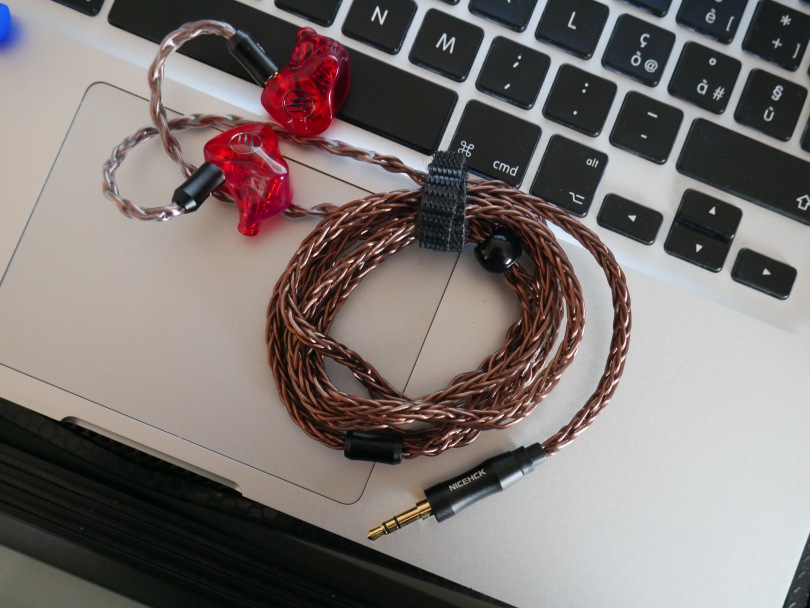











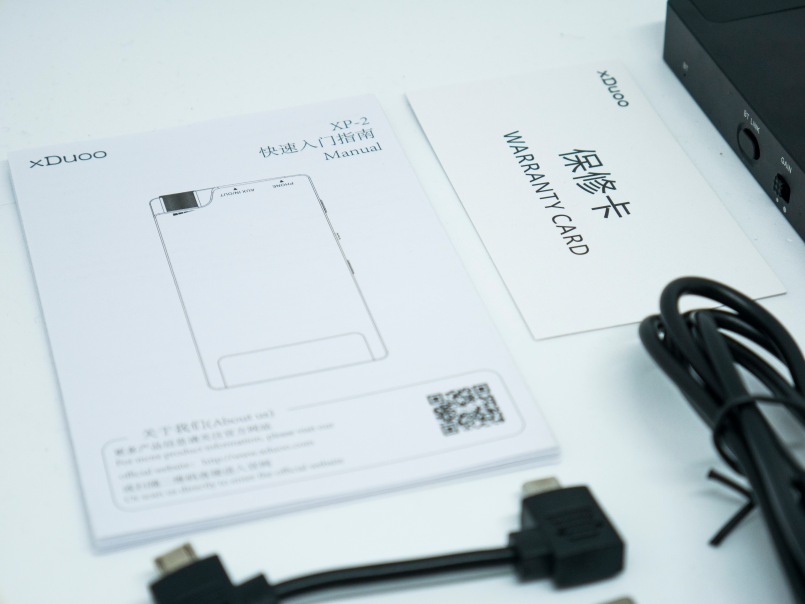








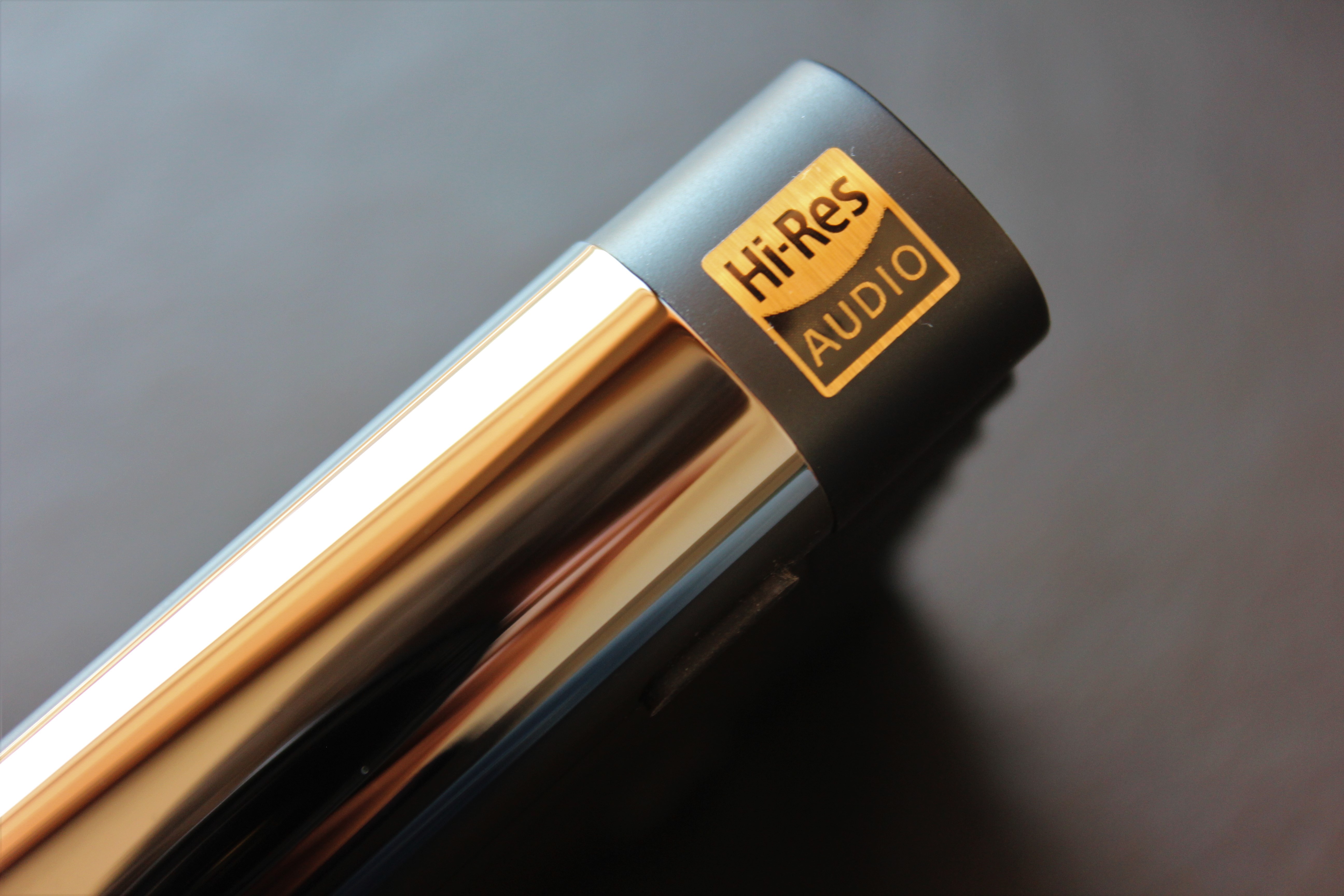

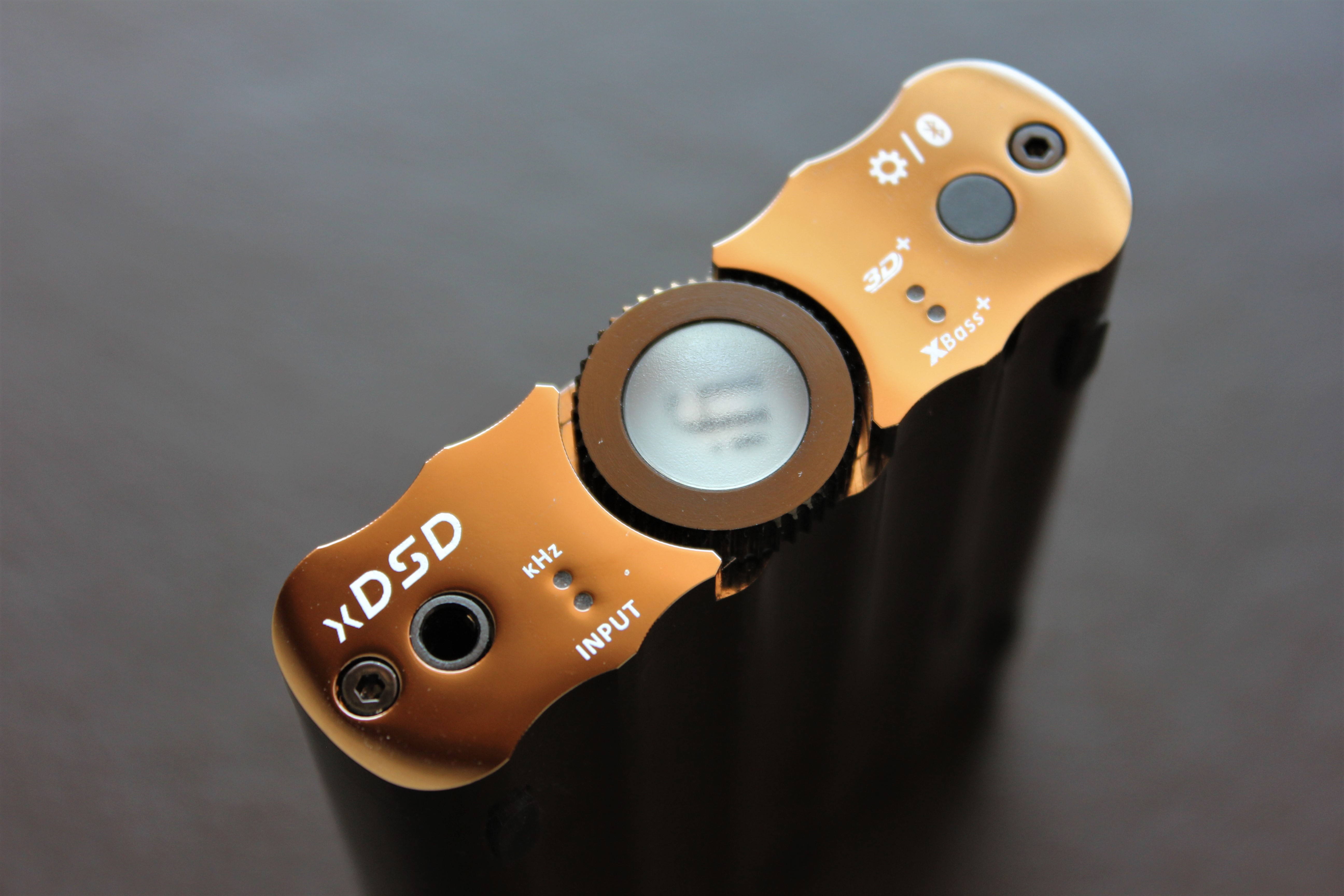



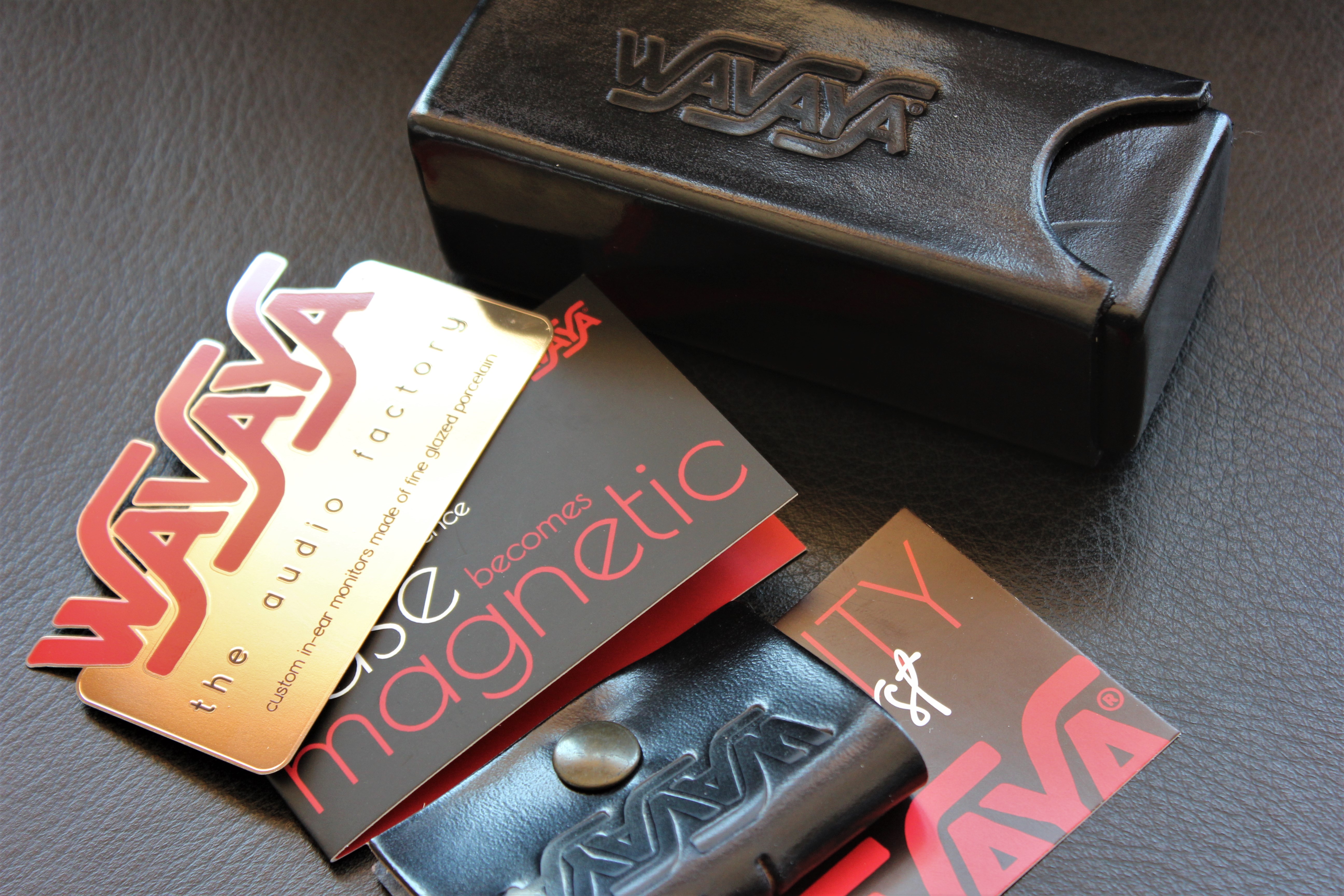
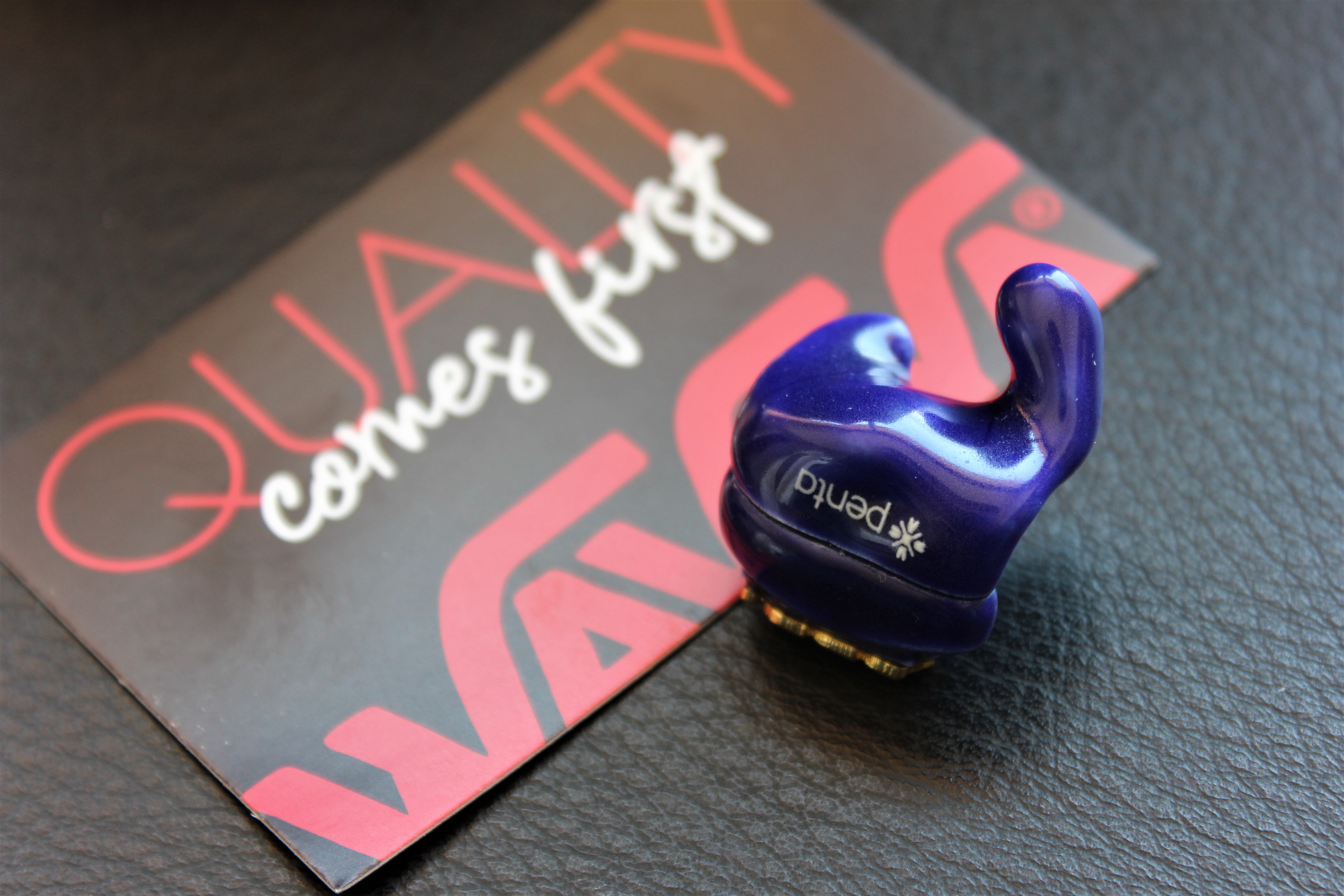




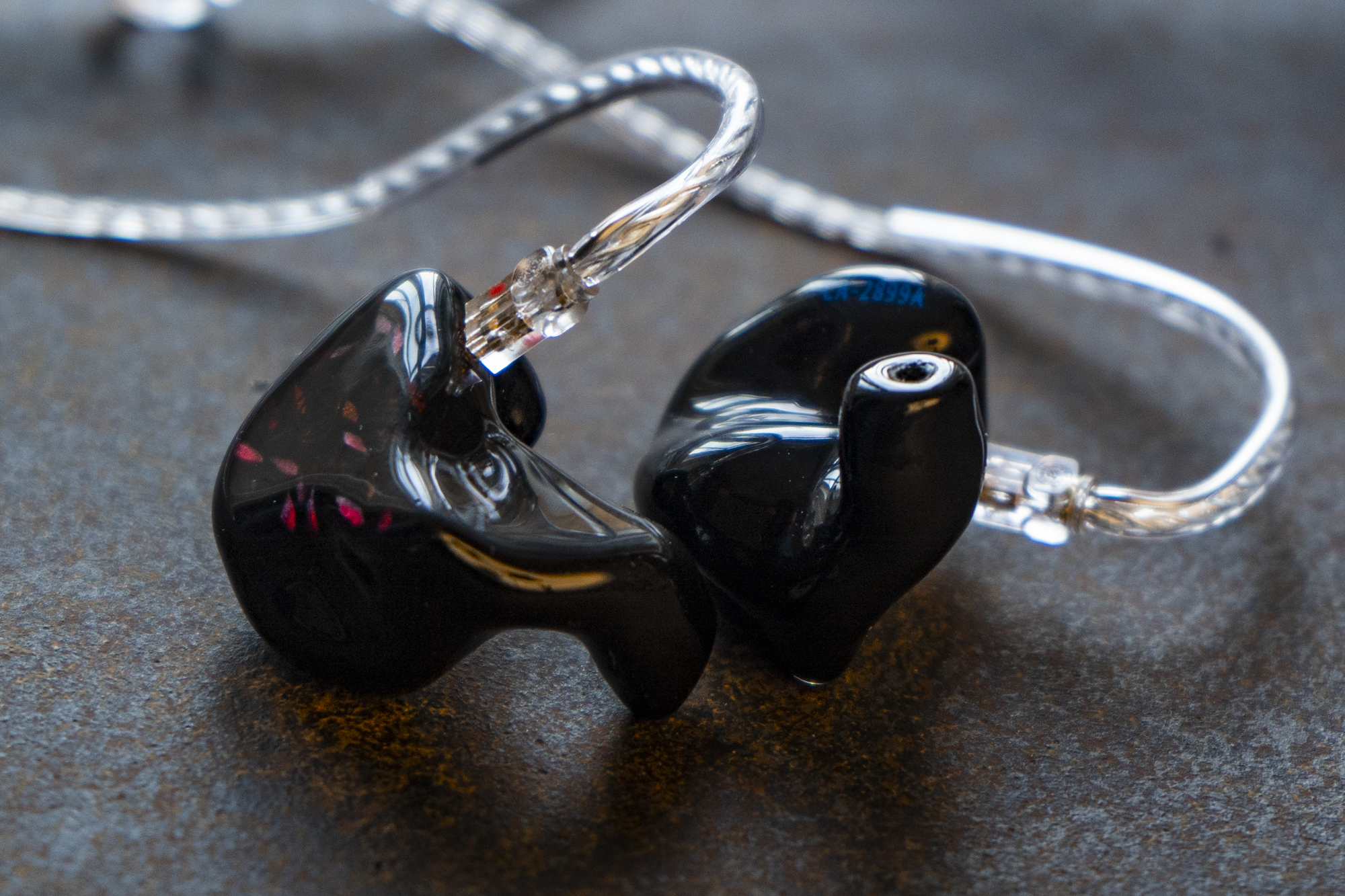

 CA FIBAE BLACK vs CA FIBAE 3:
CA FIBAE BLACK vs CA FIBAE 3:




